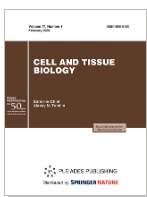Changes in the Population of Immature Neurons in the Piriform Cortex of Experimental Animals Studies in the Long-Term Period after Early Life Stress

A. B. Salmina, Yu. A. Uspenskaya, Yu. A. Panina, Ya. V. Gorina and O. L. Lopatina
Cell and Tissue Biology. Vol. 17, No. 4, 2023
Abstract—Stress in the early period of life is an important factor predisposing to the development of pathology of the nervous system in animals and human beings in the late period of ontogenesis. We modeled early-life stress to assess the activation of the piriform cortex upon presentation of olfactory stimuli to experimental animals (CD1 mice of an age of 60 days and 10 months of postnatal development) and to evaluate marker expression of neurons with prolonged immaturity involved in plasticity processes of the adult brain and its recovery after injury. It has been established that early life stress reduces the number of immature neurons with DCX+PSA-NCAM+ phenotype in the piriform cortex and the response to olfactory-memory induction in the late period after stress. At the age of 60 days (P60), olfactory stimulation reduced sensitivity to unpleasant stimuli and stimulated the processes of short-term memory, while this effect is less pronounced at the age of 10 months. The results obtained indicate a possible contribution of immature neurons of the piriform cortex to the mechanisms of aberrant neuroplasticity in the late period of ontogenesis after early life stress.
Cell and Tissue Biology. Vol. 17, No. 4, 2023
Дата издания: 21.08.2023